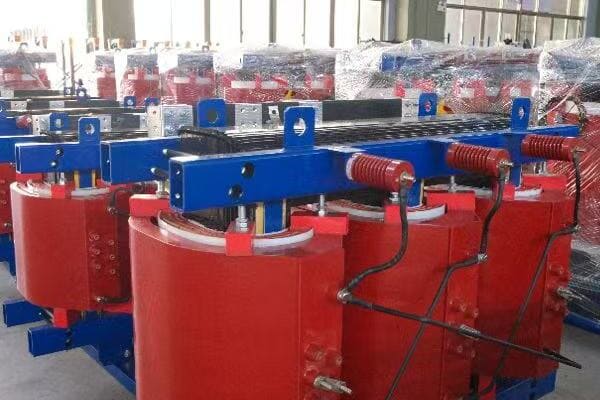Dry Type Distribution Transformer Selection Guide: Voltage, kVA & Cooling Considerations?
Are you struggling to choose the right dry type distribution transformer for your project? You’re not alone. Many engineers and procurement teams find themselves overwhelmed by the technical specifications and diverse options available. But what if you had a clear, step-by-step guide to ensure you select the perfect transformer for your specific needs?
To choose the right dry type distribution transformer, consider three key factors: voltage level, kVA rating, and cooling method. Each impacts safety, performance, and installation. This guide helps engineers and buyers select optimal configurations for industrial, utility, or commercial use cases.
In this comprehensive guide, I’ll walk you through the essential steps to select the ideal dry type distribution transformer for your project. Whether you’re working on an industrial facility, a utility substation, or a commercial building, this article will provide you with the knowledge to make an informed decision that balances performance, efficiency, and cost.
Why Dry Type Distribution Transformers Are Preferred Today?
Are you wondering why dry type transformers are becoming increasingly popular in modern power distribution systems? The shift towards these transformers is not just a trend, but a response to evolving safety, environmental, and operational needs. But what specific advantages do dry type transformers offer that make them the preferred choice in many applications?
Dry type distribution transformers are preferred today due to their enhanced safety features, environmental friendliness, and suitability for indoor installations. They eliminate fire risks associated with oil-filled transformers, require minimal maintenance, and are ideal for sensitive environments like hospitals, data centers, and high-rise buildings. Their compact design and reduced environmental impact make them a top choice for modern, sustainable projects.
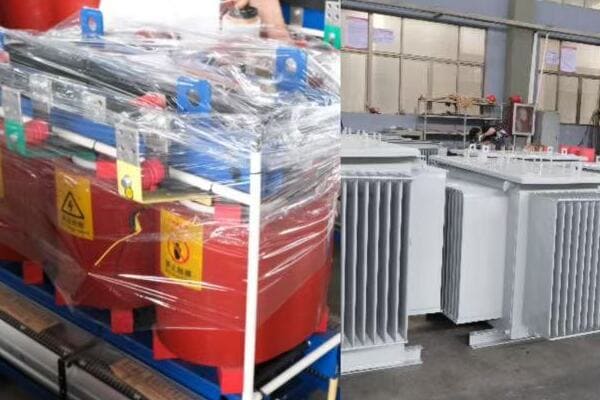
Key Advantages of Dry Type Transformers
Let’s explore the main reasons for the growing preference for dry type transformers:
- Enhanced Safety
- Environmental Benefits
- Indoor Installation Suitability
- Low Maintenance Requirements
- Compact Design
Enhanced Safety
Dry type transformers significantly reduce fire risks:
- No flammable oil used for insulation
- Self-extinguishing properties in many models
- Reduced risk of explosions
I once worked on a hospital renovation project where the choice of dry type transformers was crucial. The absence of oil eliminated the fire hazard, a critical factor in a healthcare setting where patient safety is paramount.
Environmental Benefits
These transformers are more eco-friendly:
- No risk of oil leaks or spills
- Easier disposal at end of life
- Often made with recyclable materials
During a recent green building project, the use of dry type transformers contributed significantly to achieving LEED certification, showcasing their environmental advantages.
Indoor Installation Suitability
Dry transformers excel in indoor applications:
- Can be installed close to the load center
- No special containment areas required
- Reduced noise levels compared to oil-filled units
Here’s a quick comparison of installation benefits:
| Aspect | Dry Type Transformer | Oil-Filled Transformer |
|---|---|---|
| Indoor Installation | Ideal | Requires special precautions |
| Proximity to Load | Can be close | Typically further away |
| Space Requirements | Compact | Needs additional space for safety |
| Noise Levels | Generally lower | Higher, especially with cooling fans |
Low Maintenance Requirements
Dry type transformers offer simplified maintenance:
- No oil to monitor or replace
- Reduced risk of insulation degradation
- Longer intervals between maintenance checks
Compact Design
The design of dry transformers offers space-saving benefits:
- Smaller footprint compared to oil-filled equivalents
- Lighter weight, easing installation and relocation
- Flexible mounting options (floor, wall, or ceiling)
Key reasons for choosing dry type transformers:
- Improved safety in fire-sensitive environments
- Reduced environmental risks and easier compliance with regulations
- Flexibility in installation locations, including indoors
- Lower long-term maintenance costs and efforts
- Space efficiency, particularly valuable in urban or compact settings
In my experience, these advantages make dry type transformers an excellent choice for many modern applications. I’ve seen projects where the initial higher cost of dry type transformers was quickly offset by reduced installation complexity, lower maintenance needs, and enhanced safety features.
As we move forward to discuss specific selection factors, keep in mind how these advantages align with your project’s requirements. Understanding these benefits will help you make a more informed decision when choosing the right transformer for your needs.
Key Selection Factor 1: Matching Voltage Levels to Your Grid?
Are you finding it challenging to determine the right voltage levels for your dry type transformer? This crucial decision can significantly impact your power distribution system’s efficiency and compatibility. But how do you ensure you’re selecting the correct voltage ratings for both the primary and secondary sides of your transformer?
Matching voltage levels is critical when selecting a dry type transformer. The primary voltage must align with your incoming power supply, while the secondary voltage should meet your distribution needs. Common primary voltages include 11kV, 22kV, and 33kV, with secondary voltages typically at 400V or 690V. Proper voltage matching ensures system compatibility, efficiency, and safety.
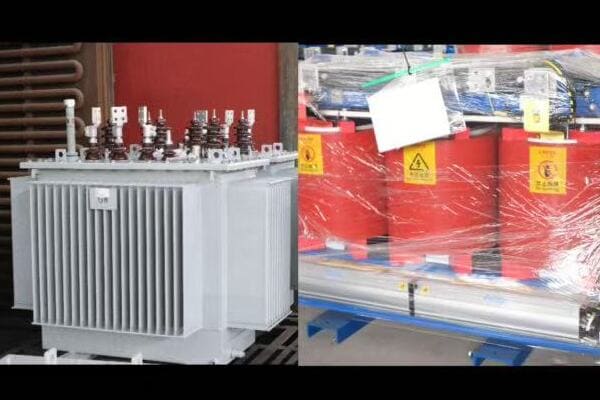
Understanding Voltage Level Selection
Let’s break down the key aspects of voltage level selection:
- Primary Voltage Considerations
- Secondary Voltage Requirements
- Voltage Ratio and Taps
- Regional and Industry-Specific Standards
- Future-Proofing Your Selection
Primary Voltage Considerations
The primary voltage must match your incoming power supply:
- Common medium voltage levels: 11kV, 22kV, 33kV
- Consider utility supply voltage in your area
- Factor in any planned upgrades to the power infrastructure
I once worked on a project where overlooking a planned utility upgrade to 33kV led to a costly transformer replacement. Always check with local utilities about current and future voltage plans.
Secondary Voltage Requirements
Secondary voltage should meet your distribution needs:
- Common low voltage levels: 400V, 690V
- Consider the voltage requirements of your equipment
- Factor in voltage drop over distribution distances
During a recent industrial park project, we chose 690V secondary voltage to reduce current and minimize cable sizes for long-distance power distribution within the facility.
Voltage Ratio and Taps
Understanding voltage ratio and taps is crucial:
- Voltage ratio = Primary voltage / Secondary voltage
- Taps allow for small voltage adjustments (typically ±2.5% and ±5%)
Here’s a quick reference for common voltage ratios:
| Primary Voltage | Secondary Voltage | Typical Ratio |
|---|---|---|
| 11kV | 400V | 27.5:1 |
| 22kV | 400V | 55:1 |
| 33kV | 690V | 47.8:1 |
Regional and Industry-Specific Standards
Voltage standards can vary by region and industry:
- European standards often differ from North American ones
- Some industries have specific voltage requirements (e.g., marine, mining)
I recall a project for a multinational company where we had to carefully consider voltage standards for equipment sourced from different countries. Ensuring compatibility was crucial for the success of the installation.
Future-Proofing Your Selection
Consider potential future needs:
- Possible changes in supply voltage
- Expansion plans that might require different voltage levels
- Emerging technologies that could impact voltage requirements
Key considerations for voltage level selection:
- Confirm current and future utility supply voltages
- Assess the voltage needs of all connected equipment
- Consider voltage drop in your distribution system design
- Be aware of regional and industry-specific voltage standards
- Factor in potential future changes or expansions
In my experience, careful consideration of voltage levels is crucial for long-term success. I’ve seen projects where overlooking future voltage needs led to premature transformer replacements, causing significant disruption and cost.
As we move on to discuss kVA rating calculations, remember that voltage selection forms the foundation of your transformer specification. Getting this right ensures compatibility with your power system and sets the stage for efficient and reliable operation.
Key Selection Factor 2: Calculating the Right kVA Rating?
Are you struggling to determine the appropriate kVA rating for your dry type transformer? Selecting the wrong capacity can lead to either an overloaded system or unnecessary costs. But how can you accurately calculate the kVA rating that perfectly matches your power needs?
Calculating the right kVA rating is crucial for optimal transformer performance. It involves summing all connected loads, considering diversity factors, and planning for future expansion. Typical ratings range from 100 kVA to 3000 kVA for dry type transformers. Proper sizing ensures efficiency, prevents overheating, and allows for load growth, balancing current needs with future requirements.
Steps to Calculate the Right kVA Rating
Let’s break down the process of determining the correct kVA rating:
- Identify All Connected Loads
- Apply Diversity and Demand Factors
- Consider Future Expansion
- Factor in Efficiency and Losses
- Select Standard kVA Rating
Identify All Connected Loads
Start by listing all equipment that will be powered:
- Motors, HVAC systems, lighting, office equipment, etc.
- Note both the running and starting power requirements
I once worked on a factory project where overlooking the starting current of large motors led to an undersized transformer. Always consider both continuous and peak loads.
Apply Diversity and Demand Factors
Not all equipment operates simultaneously or at full capacity:
- Use diversity factors to account for non-coincident operation
- Apply demand factors based on historical usage patterns
Here’s a simple table of typical diversity factors:
| Load Type | Typical Diversity Factor |
|---|---|
| Lighting | 1.0 (100%) |
| HVAC | 0.7 – 0.9 (70-90%) |
| Office Equipment | 0.5 – 0.7 (50-70%) |
| Industrial Motors | 0.6 – 0.8 (60-80%) |
Consider Future Expansion
Always plan for potential growth:
- Add a safety margin of 15-25% to your calculated load
- Consider known future expansions or equipment additions
During an industrial park project, we factored in a 20% capacity increase for future tenants. This foresight proved invaluable when new businesses moved in, avoiding the need for costly upgrades.
Factor in Efficiency and Losses
Remember to account for transformer efficiency:
- Typical efficiency ranges from 97% to 99% for dry type transformers
- Include both core losses and winding losses in your calculations
Select Standard kVA Rating
Round up to the next standard kVA size:
- Common ratings: 100, 160, 250, 400, 630, 1000, 1600, 2500 kVA
Key considerations for kVA rating calculation:
- Be comprehensive in identifying all potential loads
- Use realistic diversity and demand factors based on actual usage patterns
- Don’t forget to account for power factor in your calculations
- Consider both normal operating conditions and peak demand scenarios
- Always include a safety margin for unexpected load increases
In my experience, accurate load calculation is as much an art as it is a science. I’ve seen projects where overly conservative estimates led to unnecessarily large and expensive transformers, while underestimation resulted in overheating and premature failure.
As we move on to discuss cooling methods, keep in mind that the kVA rating you’ve calculated will play a crucial role in determining the appropriate cooling system for your transformer. Proper sizing ensures not only efficient operation but also influences the cooling requirements and overall longevity of your transformer.
Key Selection Factor 3: Choosing AN, AF, or ANAF Cooling?
Are you confused about which cooling method is best for your dry type transformer? The choice between Air Natural (AN), Air Forced (AF), and Air Natural Air Forced (ANAF) cooling can significantly impact your transformer’s performance and lifespan. But how do you determine which cooling system is right for your specific application?
Choosing the right cooling method is crucial for dry type transformer efficiency and longevity. AN cooling suits smaller, indoor transformers with stable loads. AF is ideal for larger units or where space is limited. ANAF offers a balance, providing additional cooling when needed. The choice depends on factors like transformer size, load profile, ambient temperature, and installation environment.
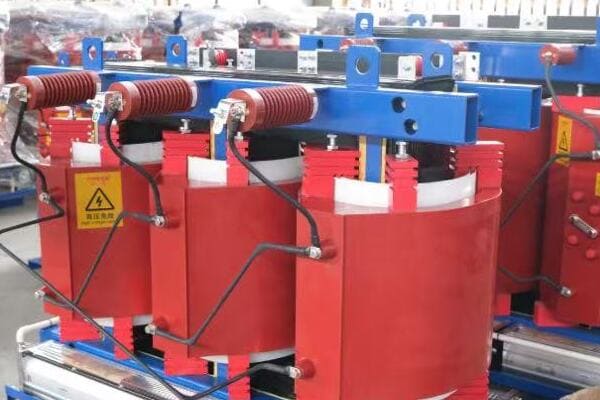
Understanding Transformer Cooling Methods
Let’s explore the three main cooling methods for dry type transformers:
- Air Natural (AN) Cooling
- Air Forced (AF) Cooling
- Air Natural Air Forced (ANAF) Cooling
- Factors Influencing Cooling Choice
- Impact on Transformer Performance and Lifespan
Air Natural (AN) Cooling
AN cooling relies on natural air circulation:
- Suitable for smaller transformers (typically up to 3 MVA)
- Ideal for indoor installations with good ventilation
- Low maintenance and noise levels
I once worked on a commercial building project where AN cooling was perfect for the basement transformer room. Its quiet operation and minimal maintenance needs were ideal for the space.
Air Forced (AF) Cooling
AF cooling uses fans to enhance air circulation:
- Suitable for larger dry-type transformers
- Allows for higher capacity in a compact size
- Requires regular maintenance of fans and filters
During an industrial facility upgrade, we opted for AF cooling for a 5 MVA transformer. The forced air allowed for a more compact installation in the limited space available.
Air Natural Air Forced (ANAF) Cooling
ANAF combines both natural and forced cooling:
- Starts with natural cooling, switches to forced air when load increases
- Offers flexibility and energy efficiency
- Balances the benefits of AN and AF systems
Here’s a comparison of these cooling methods:
| Cooling Method | Typical Capacity Range | Advantages | Considerations |
|---|---|---|---|
| AN | Up to 3 MVA | Simple, quiet, low maintenance | Larger size for given capacity |
| AF | 3 MVA and above | Compact, higher capacity | Fan maintenance, noise |
| ANAF | 2-5 MVA | Flexible, energy-efficient | More complex control system |
Factors Influencing Cooling Choice
Several factors affect the choice of cooling method:
- Transformer capacity and size constraints
- Ambient temperature and installation environment
- Load profile (constant vs variable loads)
- Noise restrictions and maintenance capabilities
In a recent data center project, we chose ANAF cooling for the main transformers. This decision allowed for efficient operation during normal loads while providing extra cooling capacity during peak usage periods.
Impact on Transformer Performance and Lifespan
Cooling method significantly affects transformer performance:
- Proper cooling extends transformer lifespan
- Efficient cooling reduces energy losses
- Adequate cooling prevents insulation degradation
Key considerations for choosing the right cooling method:
- Assess your transformer’s capacity and the available installation space
- Consider the ambient temperature and environmental conditions
- Evaluate your load profile and potential for load growth
- Factor in noise restrictions, especially for indoor installations
- Consider your maintenance capabilities and long-term operational costs
In my experience, the choice of cooling method can significantly impact a transformer’s efficiency and lifespan. I’ve seen cases where inadequate cooling led to premature transformer failure, while proper cooling allowed transformers to operate efficiently for decades.
As we move forward to discuss typical configurations for different applications, keep in mind how these cooling methods align with various industrial, utility, and commercial needs. The right cooling choice ensures optimal performance and longevity for your dry type transformer.
Typical Configurations by Application: Industrial, Utility, Commercial?
Are you wondering which transformer configurations are best suited for different sectors? The diverse needs of industrial, utility, and commercial applications can make choosing the right transformer configuration challenging. But what specific characteristics should you look for in each of these sectors?
Typical dry type transformer configurations vary significantly across industrial, utility, and commercial applications. Industrial settings often require high capacity (1000-2500 kVA) with AF cooling for heavy loads. Utility applications typically use medium capacity (500-1500 kVA) with ANAF cooling for flexibility. Commercial installations usually opt for smaller (100-1000 kVA) AN-cooled units for quiet, low-maintenance operation in buildings.
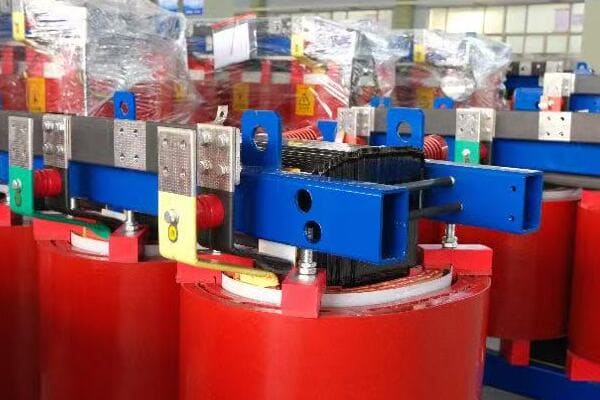
Analyzing Sector-Specific Transformer Configurations
Let’s explore the typical configurations for each sector:
- Industrial Applications
- Utility Sector Requirements
- Commercial Building Needs
- Specialized Configurations
- Emerging Trends in Sector-Specific Designs
Industrial Applications
Industrial settings often require robust transformer solutions:
- Typical capacity range: 1000-2500 kVA
- Common cooling method: AF (Air Forced)
- Voltage levels: Often 11kV/400V or 33kV/400V
- Special features: High short-circuit strength, overload capacity
I recently worked on a steel manufacturing plant project where we installed a 2000 kVA, AF-cooled transformer. Its ability to handle high loads and withstand the harsh industrial environment was crucial for the plant’s operations.
Utility Sector Requirements
Utility applications have unique needs:
- Typical capacity range: 500-1500 kVA
- Common cooling method: ANAF (Air Natural Air Forced)
- Voltage levels: Often 22kV/11kV or 33kV/11kV
- Special features: On-load tap changers, remote monitoring capabilities
During a recent grid modernization project, we implemented 1000 kVA ANAF transformers with smart monitoring features. This configuration allowed for flexible operation and easy integration with the utility’s SCADA system.
Commercial Building Needs
Commercial installations prioritize different factors:
- Typical capacity range: 100-1000 kVA
- Common cooling method: AN (Air Natural)
- Voltage levels: Usually 11kV/400V
- Special features: Low noise, compact design, high efficiency
Here’s a comparison table of typical configurations:
| Sector | Typical Capacity | Cooling Method | Common Voltage Levels | Key Features |
|---|---|---|---|---|
| Industrial | 1000-2500 kVA | AF | 11kV/400V, 33kV/400V | High overload capacity |
| Utility | 500-1500 kVA | ANAF | 22kV/11kV, 33kV/11kV | Remote monitoring |
| Commercial | 100-1000 kVA | AN | 11kV/400V | Low noise, compact |
Specialized Configurations
Some applications require unique configurations:
- Data Centers: High efficiency, redundancy (often N+1 configuration)
- Renewable Energy: Bi-directional power flow capability
- Marine Applications: Compact design, corrosion resistance
In a recent data center project, we implemented a redundant configuration using multiple 1250 kVA dry type transformers. This setup ensured continuous operation even during maintenance or unexpected failures.
Emerging Trends in Sector-Specific Designs
New trends are shaping transformer configurations:
- Smart grid compatibility in utility applications
- Energy efficiency focus in commercial buildings
- Integration with energy storage in industrial settings
Key considerations for sector-specific configurations:
- Assess the specific load characteristics of your application
- Consider environmental factors (temperature, dust, humidity)
- Factor in noise restrictions, especially in commercial settings
- Evaluate the need for future expansion or load growth
- Consider integration with other systems (e.g., building management systems, SCADA)
In my experience, successful transformer implementation often comes down to understanding the unique needs of each sector. I’ve seen projects where off-the-shelf solutions failed to meet specific industry requirements, highlighting the importance of tailored configurations.
As we move forward to compare leading brands, keep these sector-specific considerations in mind. They’ll help you understand why certain manufacturers might excel in specific applications or markets.
Comparison of Leading Brands: Efficiency, Specs & Export Cases?
Are you finding it challenging to choose between different transformer brands for your project? With so many options available, it can be overwhelming to determine which manufacturer offers the best solution for your specific needs. But how do these leading brands compare in terms of efficiency, specifications, and real-world applications?
Leading dry type transformer brands like ABB, Siemens, TBEA, and SUNTEN offer varying strengths. ABB excels in high-efficiency designs, Siemens in industrial applications, TBEA in high-capacity units, and SUNTEN in cost-effective solutions. Efficiency ratings range from 98% to 99.5%, with differences in cooling methods, voltage ranges, and specializations. Export cases demonstrate their global applicability in diverse projects.
Analyzing Leading Transformer Brands
Let’s compare some of the top brands in the dry type transformer market:
- ABB
- Siemens
- TBEA
- SUNTEN
- Schneider Electric
ABB
ABB is known for its high-efficiency transformers:
- Product Line: VPE Series
- Cooling Method: AF (Air Forced)
- Efficiency: Up to 99.5% (European standard)
- Key Features: Low core losses, smart temperature control
- Notable Export Case: UAE Abu Dhabi Metro power supply system
I recently specified ABB transformers for a large data center project. Their high efficiency and advanced monitoring capabilities were crucial for the facility’s stringent energy management requirements.
Siemens
Siemens specializes in robust industrial solutions:
- Product Line: GEAFOL Neo
- Cooling Method: AN/AF (Air Natural/Air Forced)
- Efficiency: Up to 99.3%
- Key Features: High overload capacity, compact design
- Notable Export Case: Brazilian industrial plant modernization
TBEA
TBEA offers a wide range of high-capacity transformers:
- Product Line: SC(B)10 Series
- Cooling Method: AN (Air Natural)
- Efficiency: Up to 98.8% (China standard)
- Key Features: Suitable for harsh environments, strong mechanical strength
- Notable Export Case: Pakistan PEPCO substation equipment
Here’s a comparison table of these leading brands:
| Brand | Key Strength | Efficiency Range | Typical Applications | Notable Export Regions |
|---|---|---|---|---|
| ABB | High efficiency | 98.5% – 99.5% | Data centers, Metro systems | Middle East, Europe |
| Siemens | Industrial grade | 98.3% – 99.3% | Heavy industry, Infrastructure | South America, Asia |
| TBEA | High capacity | 98.0% – 98.8% | Utility, Large industrial | Middle East, Africa |
| SUNTEN | Cost-effective | 97.5% – 98.5% | Commercial, Light industrial | Southeast Asia, Russia |
| Schneider | Eco-design | 98.0% – 99.0% | Commercial buildings, Renewables | Global |
SUNTEN
SUNTEN is known for cost-effective solutions:
- Product Line: STD Series
- Cooling Method: ANAF (Air Natural Air Forced)
- Efficiency: Up to 98.5%
- Key Features: Compact design, suitable for urban installations
- Notable Export Case: Saudi NEOM smart city project
Schneider Electric
Schneider focuses on eco-friendly designs:
- Product Line: Trihal
- Cooling Method: AN (Air Natural)
- Efficiency: Up to 99.0%
- Key Features: Low environmental impact, fire-resistant
- Notable Export Case: Peruvian solar farm integration
Key considerations when comparing brands:
- Assess efficiency ratings in the context of your specific load profile
- Consider the brand’s experience in your particular application area
- Evaluate after-sales support and spare parts availability in your region
- Look into customization options for your specific requirements
- Consider total cost of ownership, including energy savings over time
In my experience, the choice of brand often comes down to a balance of factors including technical specifications, local support, and project-specific requirements. For instance, in a recent renewable energy project, we chose Schneider Electric transformers due to their excellent integration with solar inverters and strong local support network, despite a slightly higher initial cost.
As we conclude this guide, remember that the right transformer choice depends on a careful analysis of your specific needs, balanced against the strengths of each manufacturer. The best decision will align with your project’s technical requirements, budget constraints, and long-term operational goals.
Final Tips for Engineers and Procurement Teams?
Are you feeling overwhelmed by the complexity of selecting the right dry type transformer? You’re not alone. Many engineers and procurement teams struggle with this critical decision. But what final advice can help you navigate this process more effectively and ensure you make the best choice for your project?
For engineers and procurement teams selecting dry type transformers, key tips include: thoroughly assess load profiles and future growth, consider total cost of ownership beyond initial price, ensure compatibility with existing systems, verify compliance with local standards, and evaluate after-sales support. Avoid over-specifying or under-sizing, and consider factors like energy efficiency, noise levels, and installation constraints in your decision-making process.
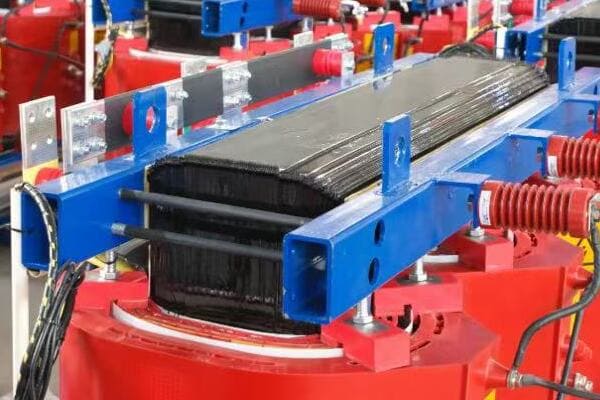
Essential Tips for Successful Transformer Selection
Let’s review some crucial advice for making the right choice:
- Comprehensive Needs Assessment
- Total Cost of Ownership Evaluation
- Compatibility and Integration Considerations
- Regulatory Compliance and Standards
- Supplier Evaluation and Support
Comprehensive Needs Assessment
Start with a thorough analysis of your requirements:
- Accurately calculate current and future load requirements
- Consider load profiles, peak demands, and potential growth
- Assess environmental factors (temperature, altitude, humidity)
I once worked on a project where underestimating future load growth led to a costly transformer replacement within just three years. Always factor in a reasonable growth margin in your calculations.
Total Cost of Ownership Evaluation
Look beyond the initial purchase price:
- Consider energy efficiency and potential energy savings
- Factor in maintenance costs over the transformer’s lifespan
- Evaluate reliability and potential downtime costs
Here’s a simple TCO comparison table:
| Factor | High Efficiency Model | Standard Efficiency Model |
|---|---|---|
| Initial Cost | Higher | Lower |
| Energy Costs (25 years) | Lower | Higher |
| Maintenance Costs | Similar | Similar |
| Total Cost of Ownership | Often Lower | Often Higher |
Compatibility and Integration Considerations
Ensure the transformer fits well with your existing systems:
- Check compatibility with switchgear and protection systems
- Consider integration with building management or SCADA systems
- Evaluate space constraints and installation requirements
During a recent data center upgrade, we had to carefully consider the integration of new transformers with existing UPS systems and generators. Compatibility issues can lead to significant project delays if not addressed early.
Regulatory Compliance and Standards
Stay up-to-date with relevant standards:
- Ensure compliance with local electrical codes
- Consider energy efficiency standards (e.g., DOE 2016 in the US)
- Verify adherence to safety and environmental regulations
Supplier Evaluation and Support
Choose suppliers wisely:
- Evaluate the manufacturer’s reputation and track record
- Consider local support and spare parts availability
- Assess warranty terms and after-sales service
Key tips for engineers and procurement teams:
- Don’t compromise on quality for short-term cost savings
- Involve all stakeholders in the decision-making process
- Request and thoroughly review technical datasheets and test reports
- Consider conducting site visits to see similar installations
- Keep detailed documentation of your selection process for future reference
In my experience, successful transformer selection often comes down to balancing technical requirements with practical considerations. I’ve seen projects succeed when teams took a holistic approach, considering not just the transformer itself, but how it fits into the broader system and long-term operational goals.
Remember, the right transformer choice can significantly impact your project’s success, energy efficiency, and long-term operational costs. By following these tips and considering all relevant factors, you can make an informed decision that will serve your project well for years to come.
Conclusion
Selecting the right dry type distribution transformer involves carefully considering voltage levels, kVA ratings, and cooling methods. By understanding sector-specific needs, comparing leading brands, and following expert tips, engineers and procurement teams can make informed decisions. The right choice balances performance, efficiency, and long-term cost-effectiveness, ensuring optimal power distribution for your specific application.
Remember, at chbeb-ele, we’re not just sharing information – we’re empowering you to be part of the solution in creating a secure, clean, and efficient energy future. Let’s continue this journey together.
Recent Post
Quick Message
Request A free quote
We'd like to work with you
- +86 15558785111
- chbebgroup@chbebpower.com
- +86 15558785111
What We Do
CHINA BEI ER BIAN (CHBEB) GROUP, with 218 million in registered capital, originated from Beijing Beierbian Transformer Group. Headquartered in Beijing for R&D, it operates major production bases in Nanjing and Yueqing, producing high-quality products.
Latest Post
Latest Product
Contact Us
- +86 15558785111
- chbebgroup@chbebpower.com
- +86 15558785111
BeiJing
No 3,RongJing East Road,BeiJing Economic Technological Development Area,BeiJing,China
JiangSu
No 7️Xiangfeng Road,Jiangning,NanJing,JiangSu,China
WenZhou
No.211, Wei 16 Road, Industrial Zone, Yueqing, Wenzhou, Zhejiang, China.
XiangYang Industrial Zone ,YueQing,WenZhou,ZheJiang,China


